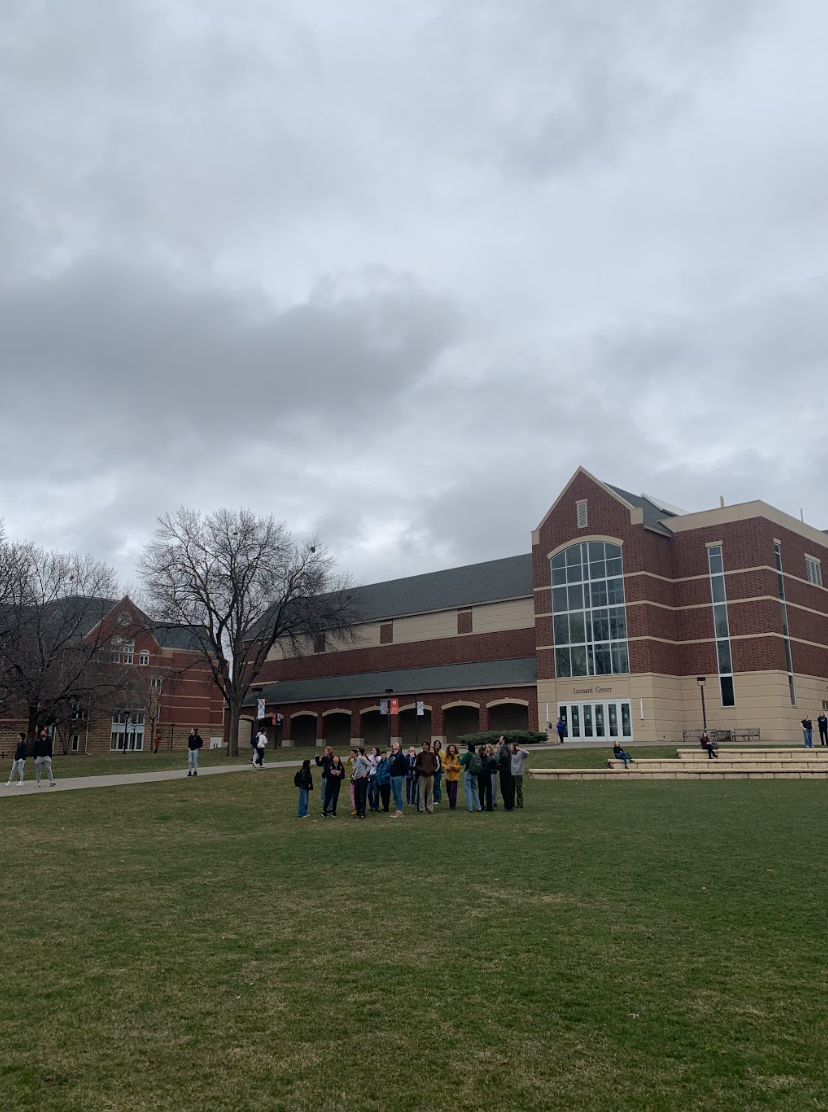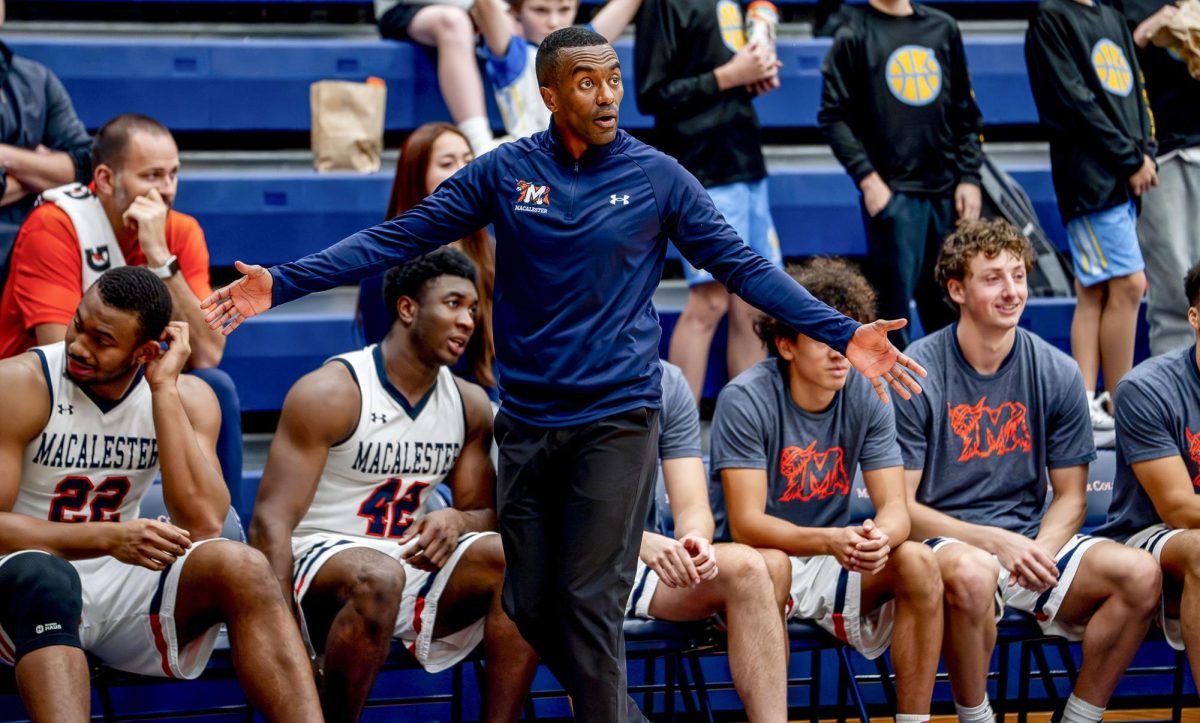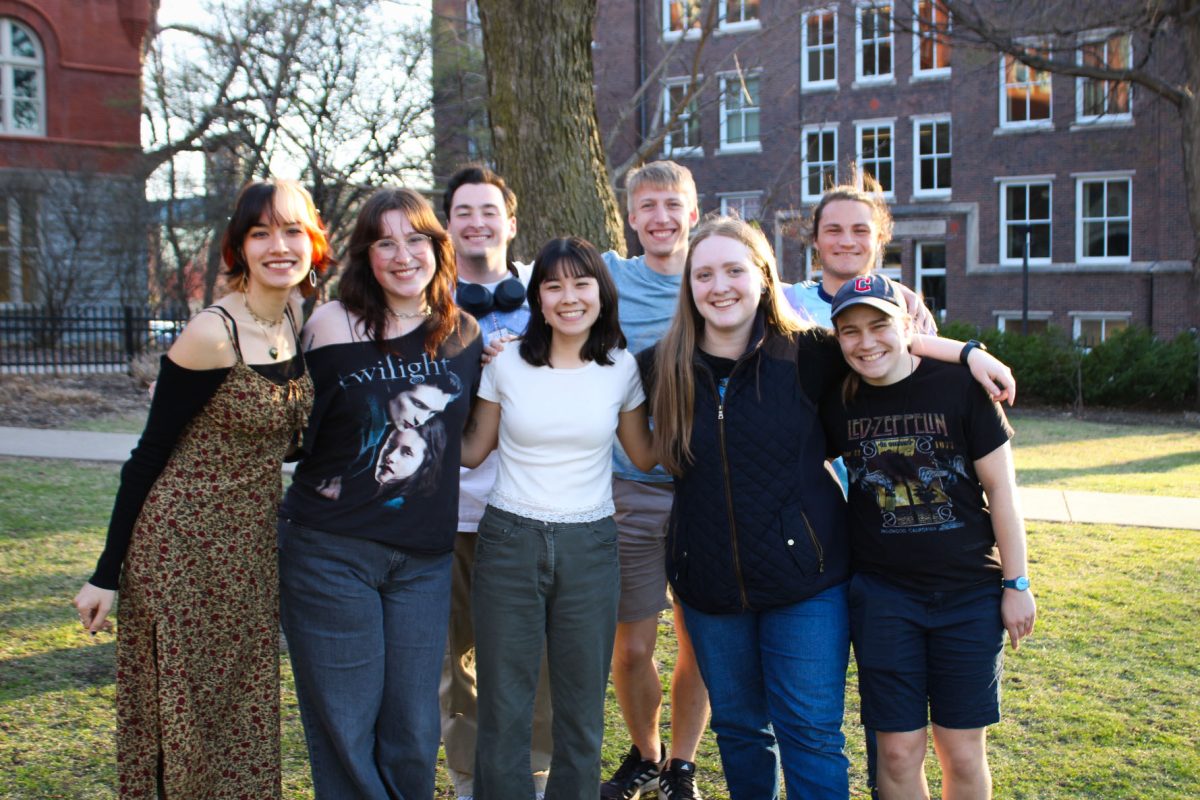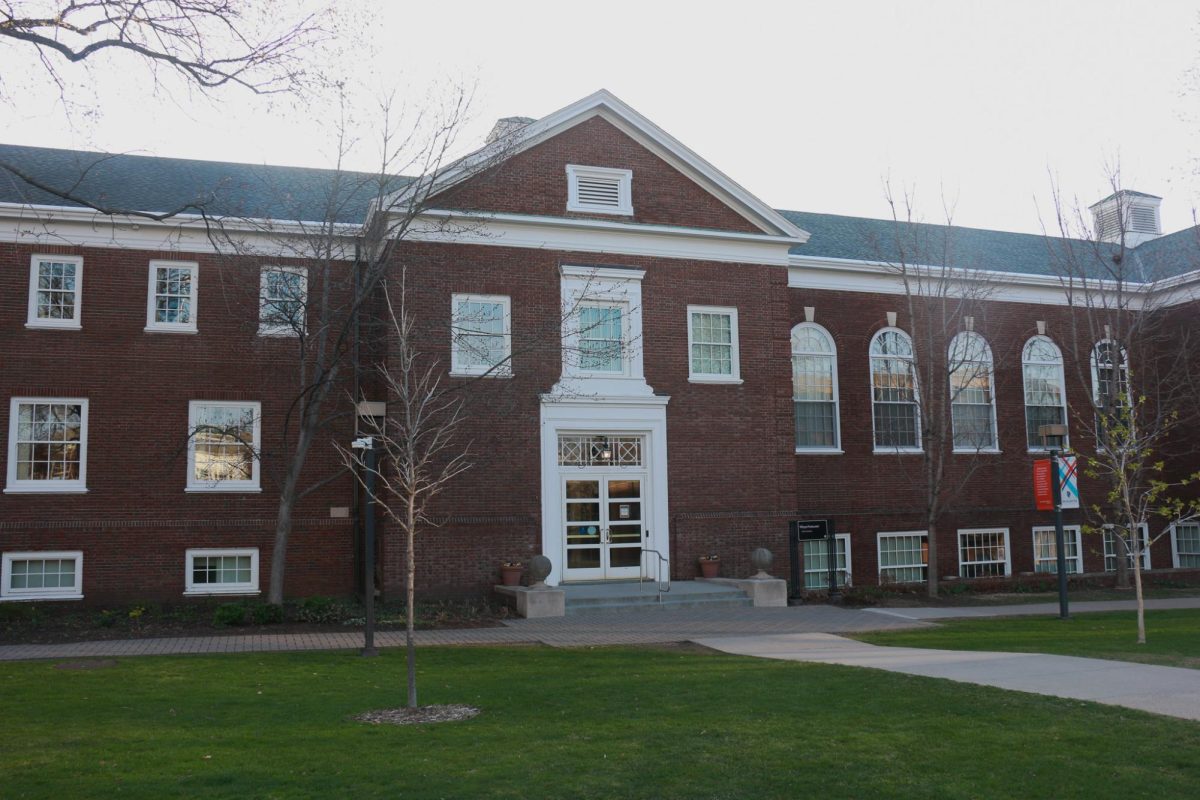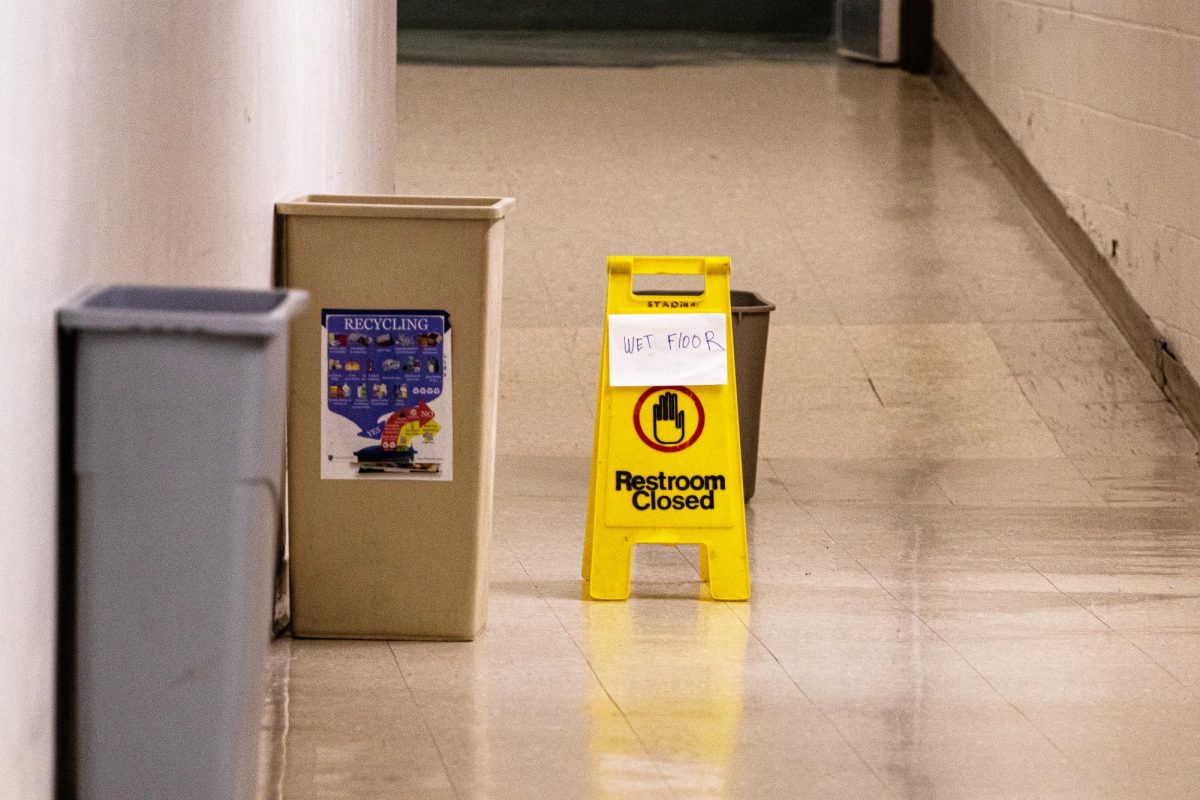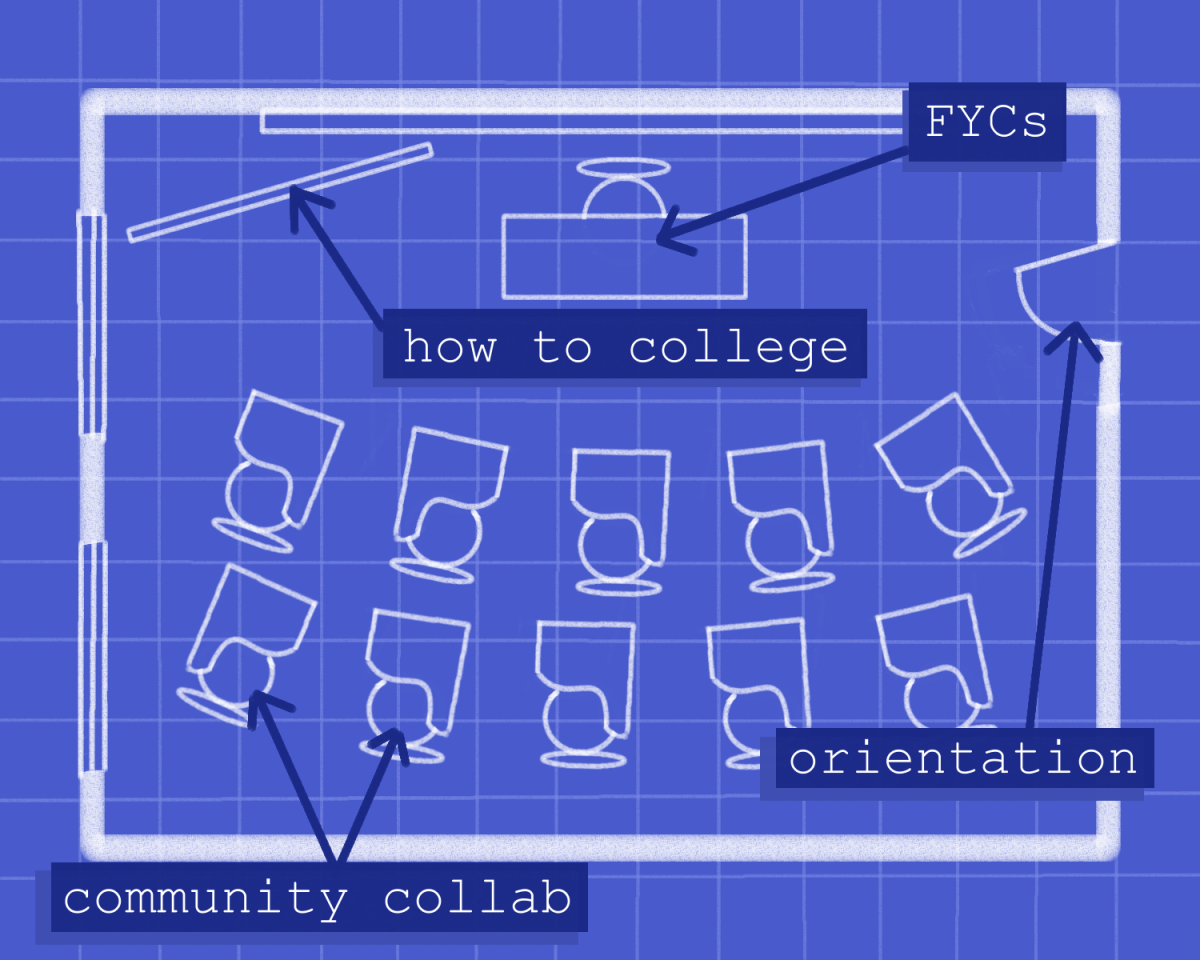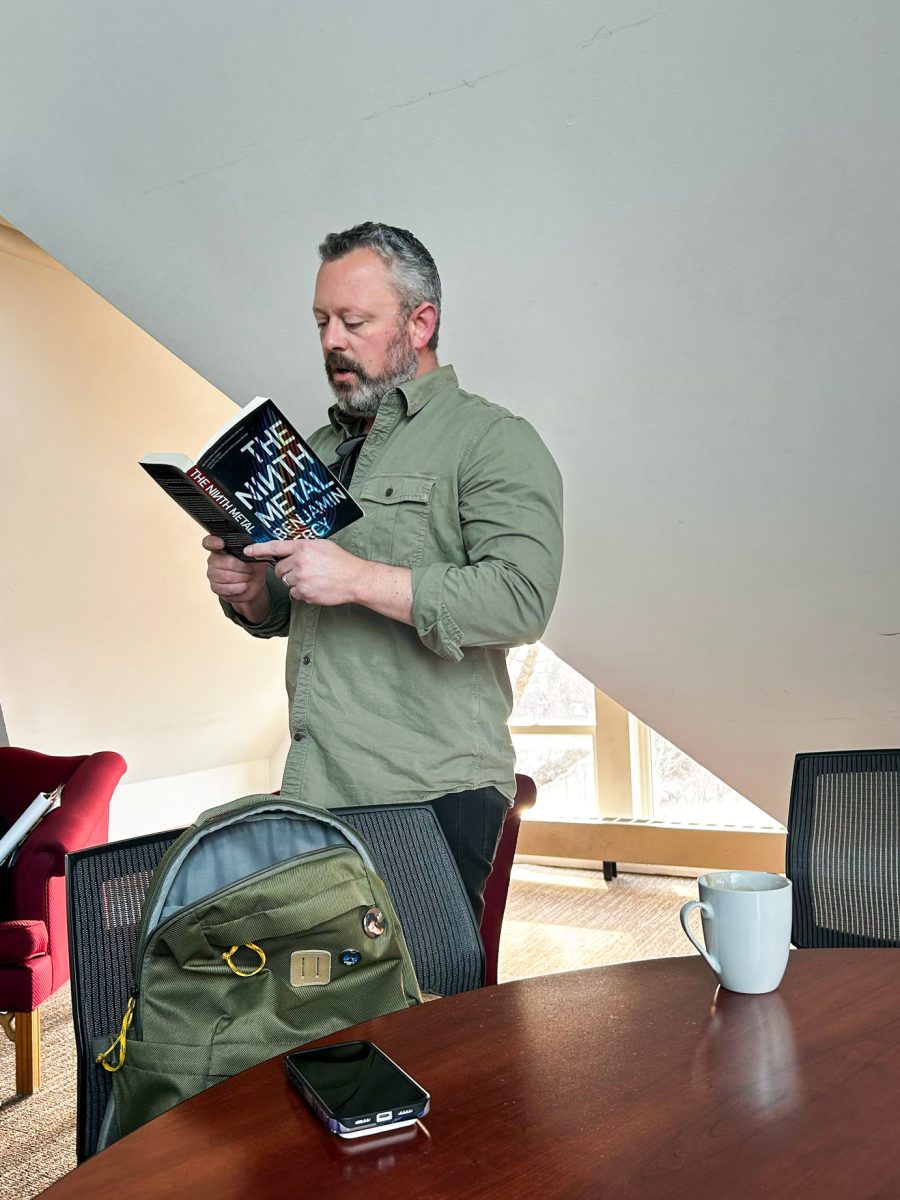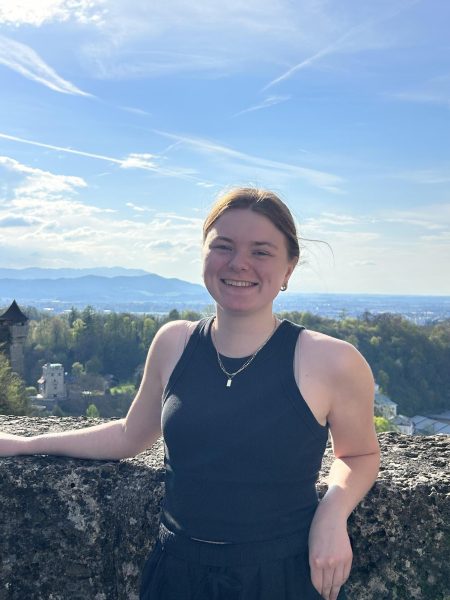“Chasers of shadows,” “chasers of the eclipse” or, more simply, umbraphiles, prepared anxiously for the possibility of total solar eclipse this Monday, April 8. Many students and staff were determined to chase the sun’s shadow and experience what they described as a life-changing experience. Unfortunately, in St. Paul, viewers were met with a gray sky.
In the Twin Cities, the partial eclipse was estimated to start at 12:49 p.m., peak at 2:02 p.m. and end at 3:14 p.m. None of the projected 74% totality was visible during this two-hour period.
“The prognostications were never really good,” Laboratory Supervisor and Observatory Manager in Macalester’s astronomy department Brian Adams explained. “So I was hopeful still, but, of course, my hopes were dashed [Monday] along with everybody else in Minnesota.”
This eclipse’s rarity and size made it particularly interesting; the path of totality — where the moon completely blocks the sun — ranged from 108 to 122 miles and longer. It traced a diagonal path from Mexico through South Texas, Indianapolis and up to Montreal, passing through densely populated areas. NASA estimates that 31.6 million people live in the path of totality and 200 million people live 200 miles away and experienced a partial eclipse, such as in St. Paul.
However, the majority of umbraphiles are fascinated by the eclipse not for scientific reasons, but for more profound and poetic ones, such as its unexplainable beauty and the feelings it elicits.
In 1973, Macalester astronomy professor Sherman Schultz took two students on a 10-day cruise to Africa during the eclipse. In an oral history recorded in 2007, Schultz described this joyous “Macalester College Eclipse Expedition.”
“If you can imagine flying to New York, on the ocean over 10 days, to and fro, stop at the Canary Islands, have a beautiful time for photographing and observing this eclipse,” Schultz explained. “Sitting next to Neil Armstrong at the bar, having a beer.”
On Monday, no Macalester students spotted Neil Armstrong, but still had profound experiences near and far. Computer science and economics major Aalyan Arif Mahmood ’24 has always had a passion for astronomy.
Mahmood planned to join the viewing party at the Bell Museum in St. Paul. Instead, he watched the sky get darker from the comfort of his porch surrounded by friends, which he described as its own kind of beauty. Mahmood also joined watch parties online and witnessed this event nationwide.
“I saw friends from basically every part of the country coming out, and there were thousands of people on the streets,” Mahmood said. “I think seeing something like an eclipse also reminds you of how we’re so isolated in this huge space, and so that is itself a form of community.”
For many, their first eclipse hooked them for life. Chair of the geology department Alan Chapman is one such individual. He traveled down to Jackson, Mo. with his family and saw totality for four minutes.
“As soon as the last little bits of the fingernail clipping of the sun went away, I just felt this wave of emotions just kind of build to the point where tears just started naturally flowing out of my eyes,” Chapman said. “It was as if the fourth wall of life was being broken.”
Chapman watched from the football field of a local high school with over 2,000 students, yet they all reacted in the same way. A hush fell over the field as the sun started setting along the whole horizon, up until applause erupted when it rose four minutes later.
“I just felt like, for an instant, all of our stories converged at the same place and all of our lives were interwoven in such a way,” Chapman said.
Chapman hopes to plan a geology trip to Iceland to catch the solar eclipse in 2026.
Claudia Guillot-Wallace ’23 traveled to Missouri with her family for the eclipse in 2017. She returned to Missouri this year with four friends and spent just 24 hours there, plus a 15 hour traffic-filled ride home but described it as 100% worth it.
“There was a total 360 degrees sunrise,” Guillot-Wallace said. “The birds stopped chirping and the bugs started making noise when it got dark … it was kind of magical.”
What made this magical was not just the eclipse but also being surrounded by her own friends alongside other groups of loved ones.
“I think everyone who was there was there with friends or family,” Guillot-Wallace noted. “I didn’t see anyone who was alone, which is kind of sweet. Everyone was there to have an experience together.”
Adams echoes all his fellow new umbraphiles and urges everyone to witness this kind of event in the future.
“I encourage people to seek them out if you can, and just kind of take in as much as you can,” Adams said.
The next eclipse in the United States will take place August 23, 2044, so start your planning now and get chasing.

